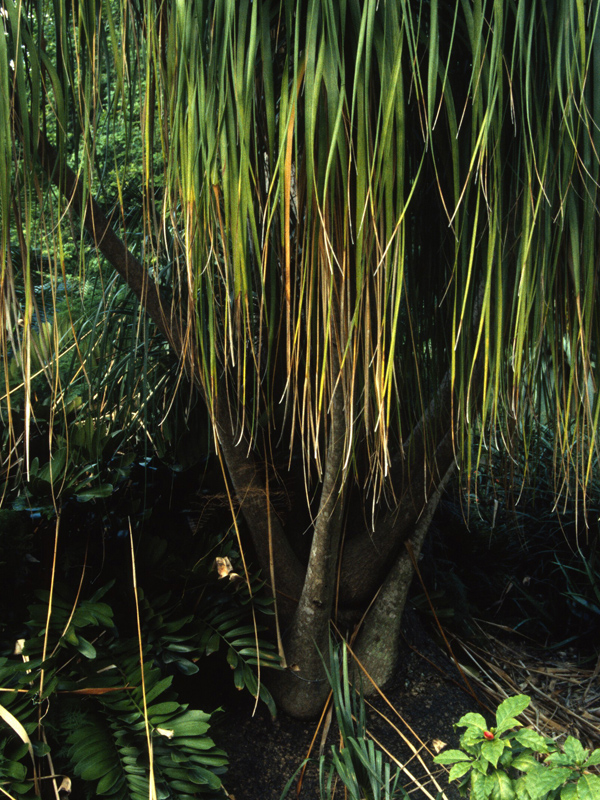
Tropicals, Woody > Pandanus > Pandanus tectorius > Pandanus tectorius
Pandanus tectorius
Fragrant Screw Pine
Origin: South East Asia, Malaysia, Australia. Genus name comes from the word Pandang, which is the Malayan name for the plant.
| Family |
| Pandanaceae |
| Genus |
| Pandanus |
| Species |
| tectorius |
| Category |
| Tropicals, Woody |
| Type |
| Tree (evergreen) |
| USDA Hardiness Zone |
| 10 |
| Canadian Hardiness Zone |
| Requires cool season protection under glass. |
| RHS Hardiness Zone |
| H3 - H2 |
| Temperature (°C) |
| -1 - 4 |
| Temperature (°F) |
| 30 - 40 |
| Height |
| 4.5 - 6 m |
| Spread |
| 4.5 - 7.5 m |
Photographs
Description and Growing Information
Flowering Period
| General Description |
| A palm-like tropical evergreen tree that is diocecious (male and female flowers appear on separate trees) with the female flowers giving way to edible fruits that are similar to pineapples. |
| Landscape |
| Unique fruit tree or accent tree. Makes a good container plant in cooler climates. |
| Cultivation |
| Grow in full sun or partial shade in an average, medium moisture, well-drained soil. Frost intolerant, preferring warm, humid conditions. |
| Shape |
| Erect, multi-branched. |
| Pests |
| No serious problems, although scale and mites may be a nuisance for indoor specimens. |
| Bark/Stem Description |
| Trunk is grey, ringed by leaf scars, with conspicuous roots that help anchor the tree. |
| Leaf Description |
| Leaves are long and sword-shaped (to 15 cm long) with spiny margins, light green in colour. |
| Flower Description |
| Male flowers are small and fragrant, blooming in clusters that are enclosed by showy white bracts. Female flowers appear in compact, green flowerheads and are followed by the fruit. |
| Fruit Description |
| Fruit is edible, to 20 cm in diameter, with multiple segments, maturing from green to yellow to red, becoming aromatic once ripe. |
| Notable Specimens |
| Suan Packkad Palace, Bangkok, Thailand. |
| Propagation |
| Propagate by offsets, suckers, cuttings of lateral shoots, or by seed that has been pre-soaked for 24 hours prior to planting. |
| Ethnobotanical Uses (Disclaimer) |
| Edible fruit, leaves that can be used for thatched roofs, baskets, mats, etcetera, and Kewra water can be extracted from the flowers to use as flavouring. |

